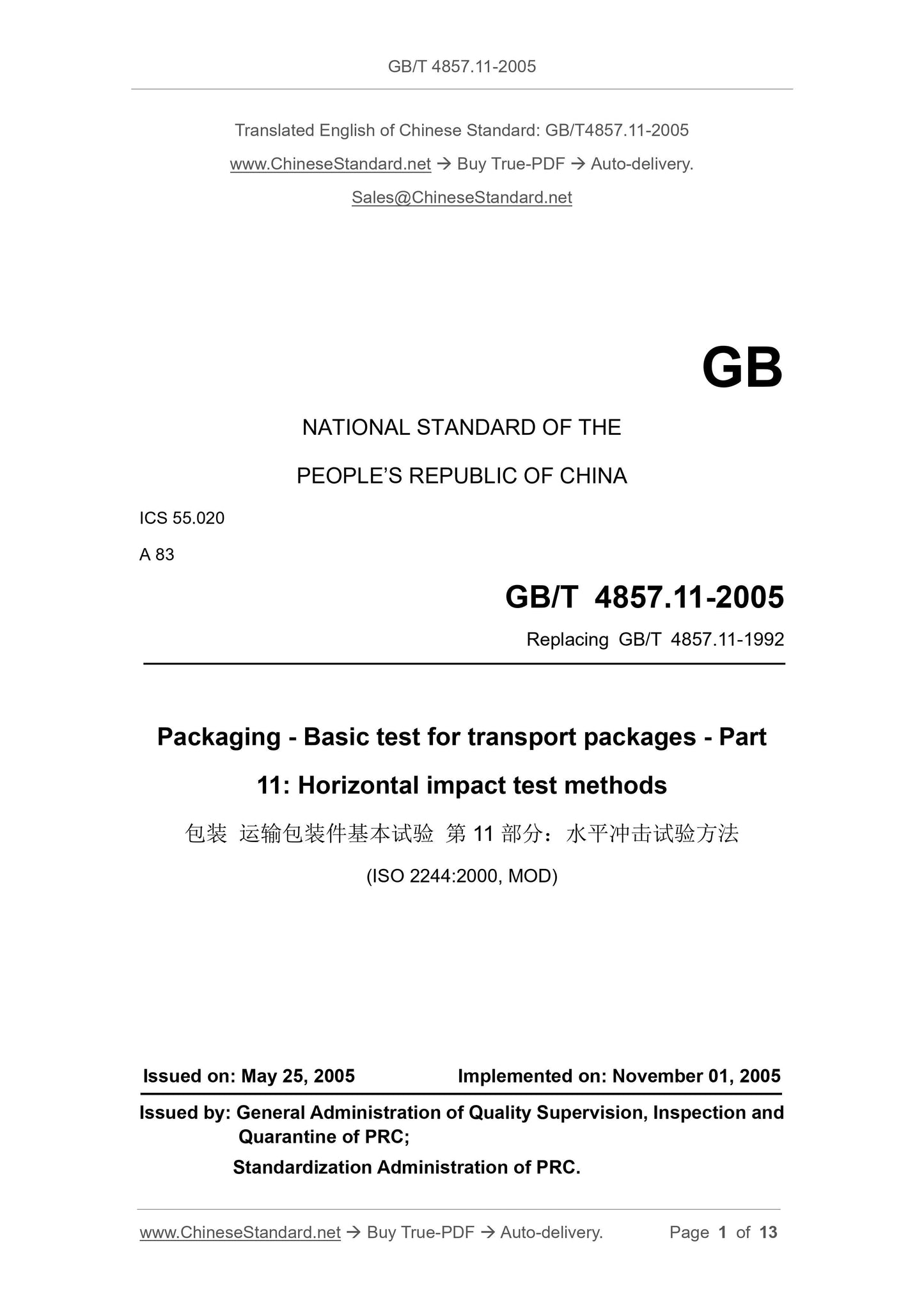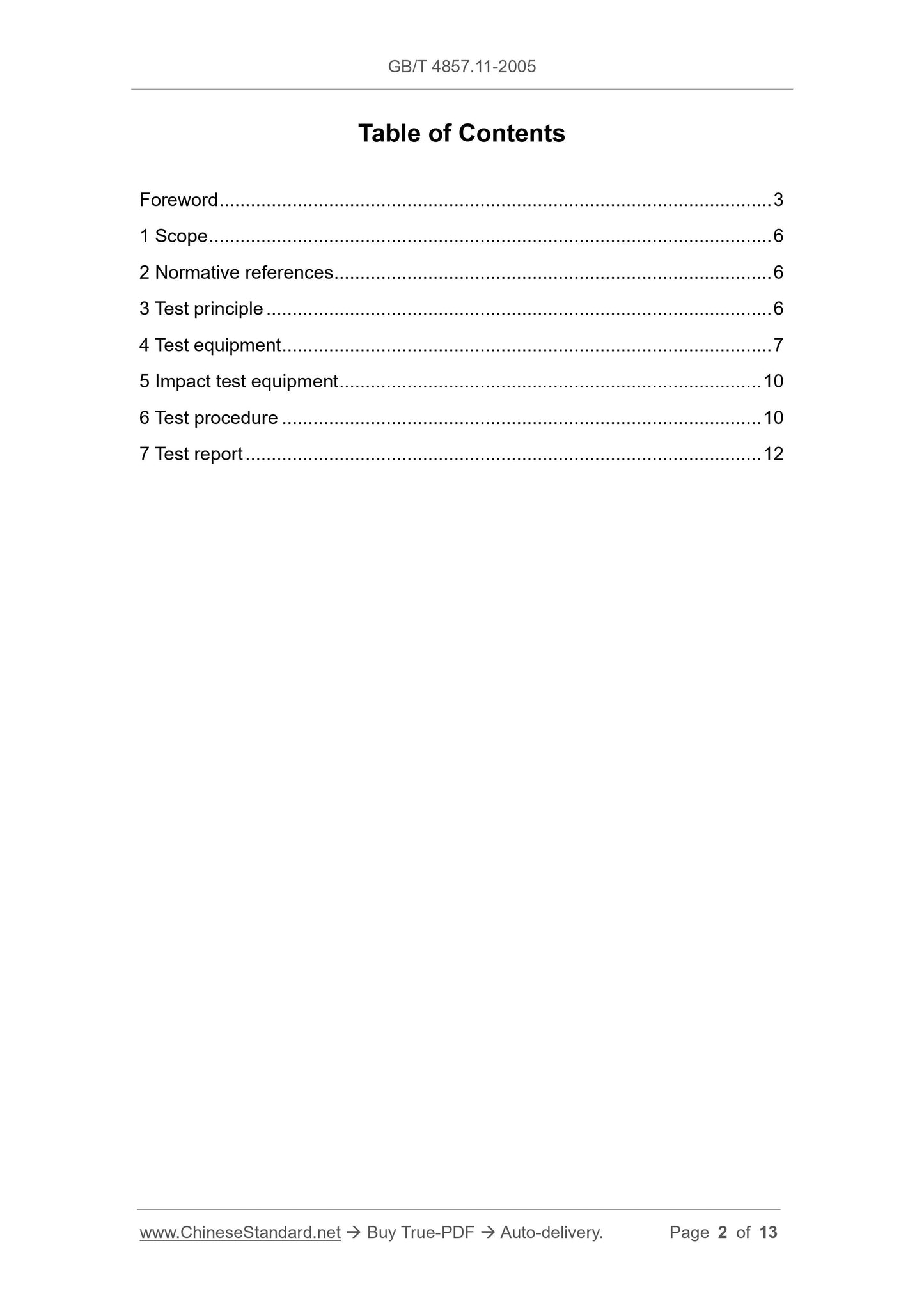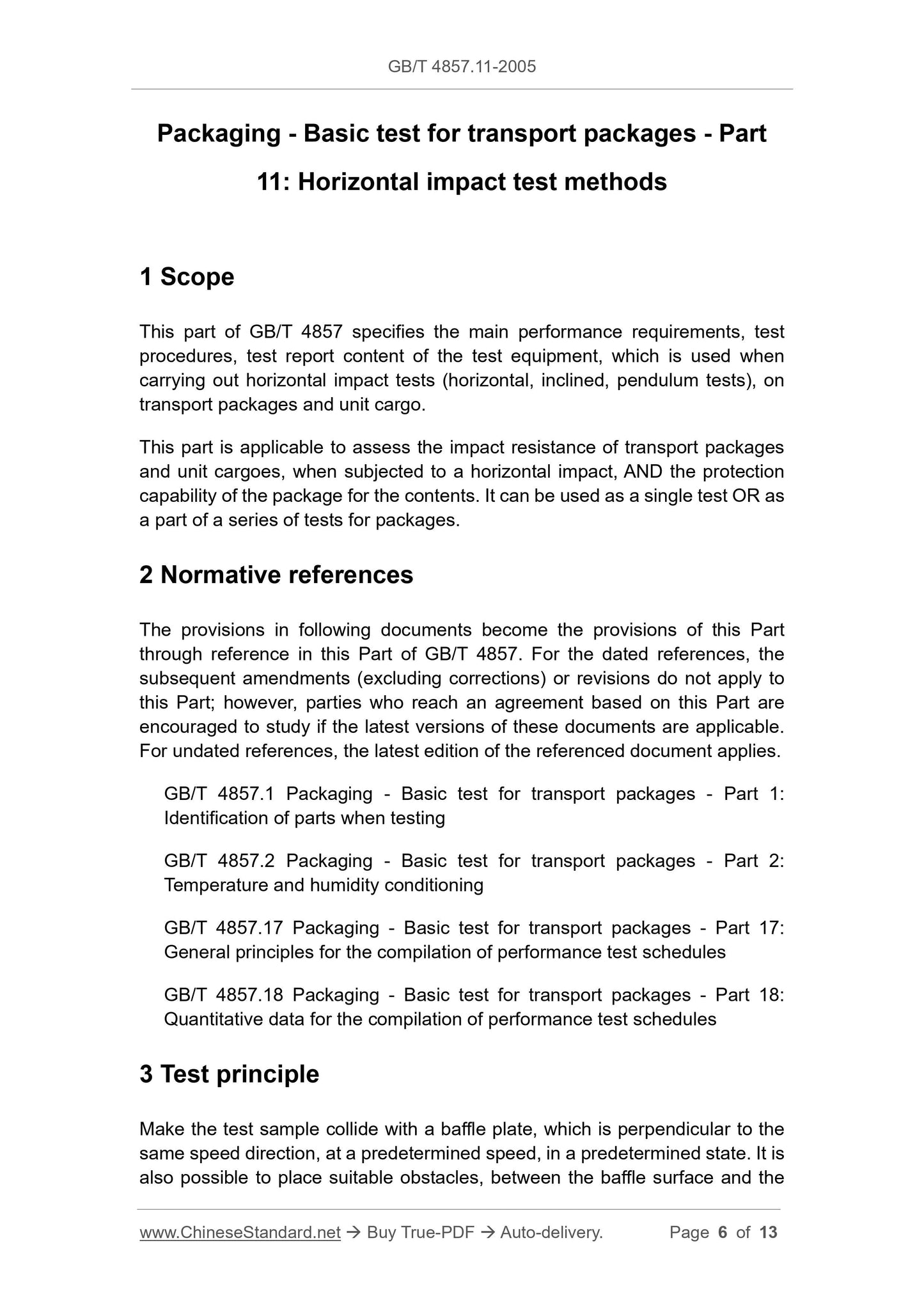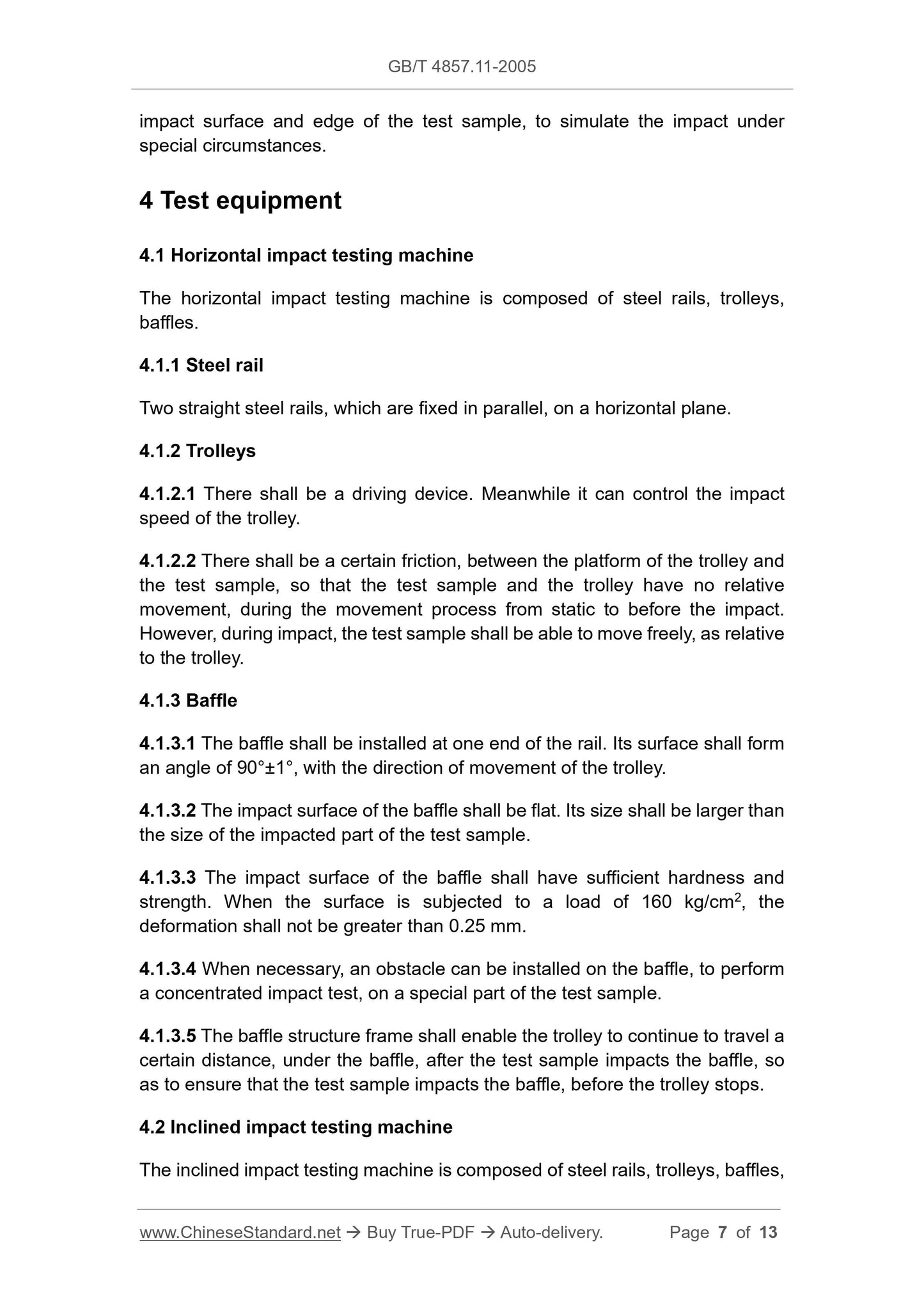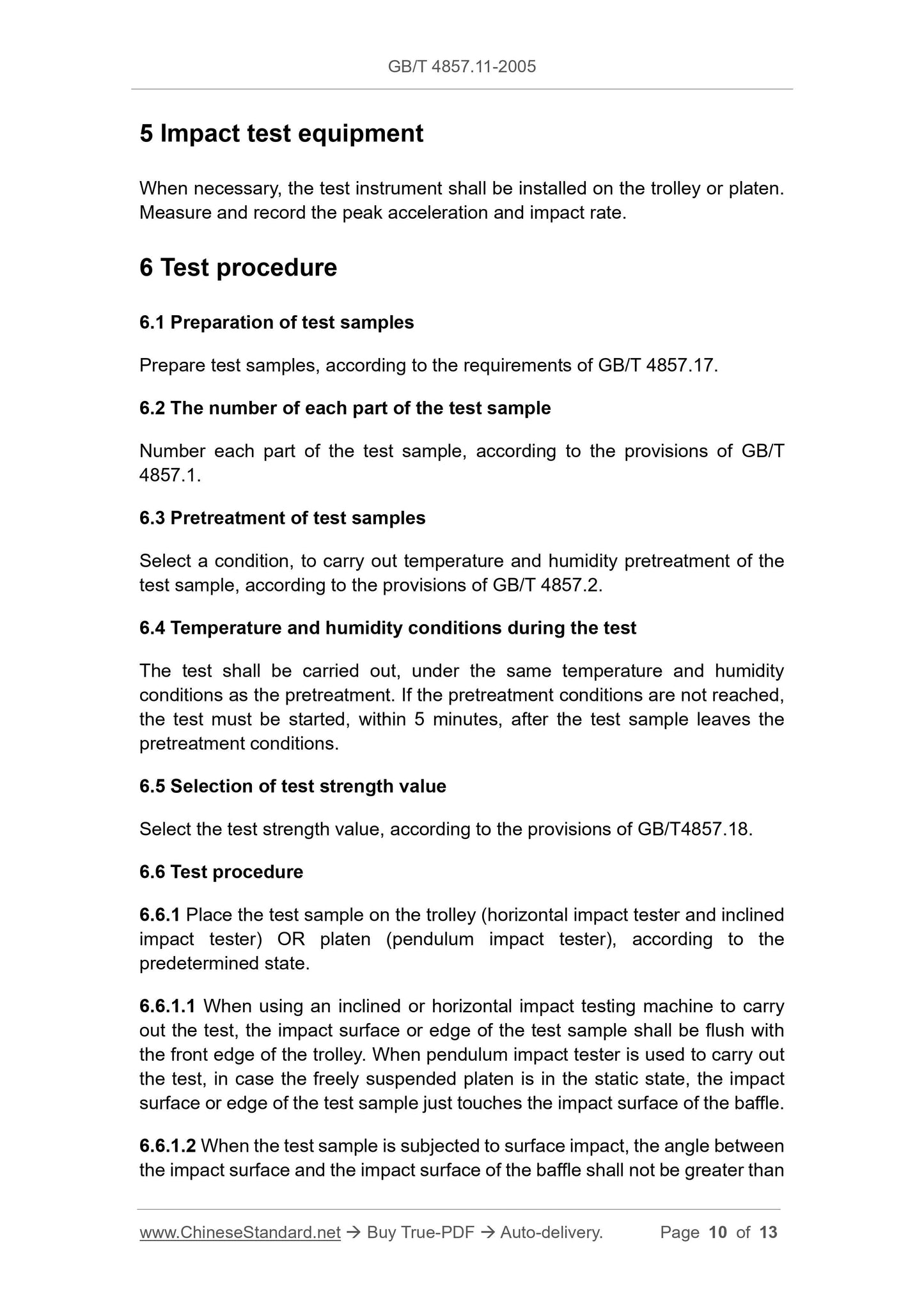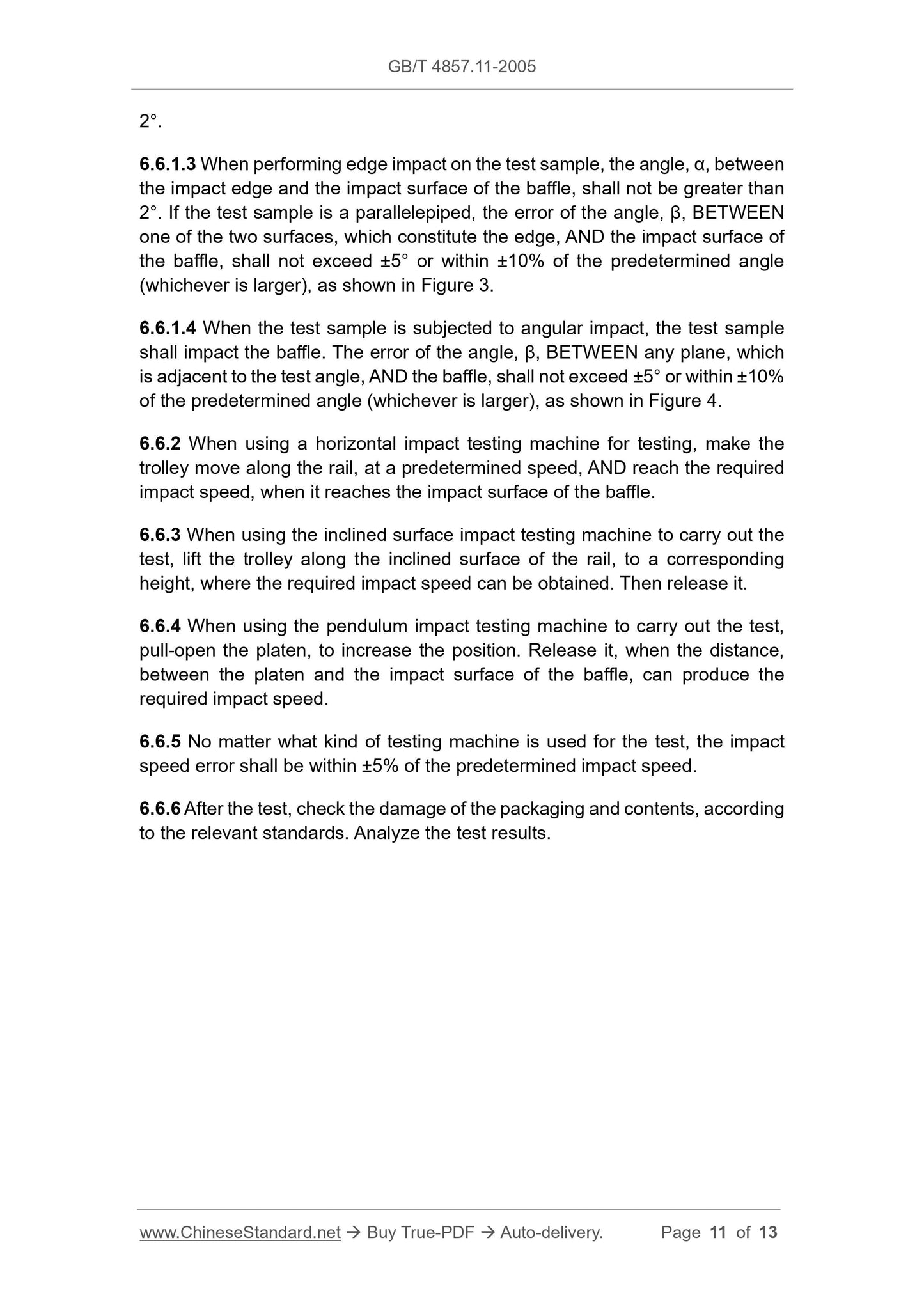1
/
of
6
www.ChineseStandard.us -- Field Test Asia Pte. Ltd.
GB/T 4857.11-2005 English PDF (GB/T4857.11-2005)
GB/T 4857.11-2005 English PDF (GB/T4857.11-2005)
Regular price
$95.00
Regular price
Sale price
$95.00
Unit price
/
per
Shipping calculated at checkout.
Couldn't load pickup availability
GB/T 4857.11-2005: Packaging -- Basic tests for transport packages -- Part 11: Horizontal impact test methods
Delivery: 9 seconds. Download (and Email) true-PDF + Invoice.Get Quotation: Click GB/T 4857.11-2005 (Self-service in 1-minute)
Newer / historical versions: GB/T 4857.11-2005
Preview True-PDF
Scope
This part of GB/T 4857 specifies the main performance requirements, testprocedures, test report content of the test equipment, which is used when
carrying out horizontal impact tests (horizontal, inclined, pendulum tests), on
transport packages and unit cargo.
This part is applicable to assess the impact resistance of transport packages
and unit cargoes, when subjected to a horizontal impact, AND the protection
capability of the package for the contents. It can be used as a single test OR as
a part of a series of tests for packages.
Basic Data
| Standard ID | GB/T 4857.11-2005 (GB/T4857.11-2005) |
| Description (Translated English) | Packaging. Basic tests for transport packages. Part 11: Horizontal impact test methods |
| Sector / Industry | National Standard (Recommended) |
| Classification of Chinese Standard | A83 |
| Classification of International Standard | 55.020 |
| Word Count Estimation | 9,988 |
| Date of Issue | 2005-05-25 |
| Date of Implementation | 2005-11-01 |
| Older Standard (superseded by this standard) | GB/T 4857.11-1992 |
| Adopted Standard | ISO 2244-2000, MOD |
| Regulation (derived from) | Announcement of Newly Approved National Standards No. 8 of 2005 (No. 82 overall) |
| Issuing agency(ies) | General Administration of Quality Supervision, Inspection and Quarantine of the People Republic of China, China National Standardization Administration Committee |
| Summary | This standard specifies requirements for cargo transport packages and single horizontal impact tests (horizontal, inclined and hanging pendulum test) test equipment used when the main performance requirements, test procedures and test reports. This section applies to a single assessment of transport packages and cargo being horizontal impact strength and resistance to impact on the contents of the packaging protection. Either as single test package can be used as part of a series of tests. |
Share
